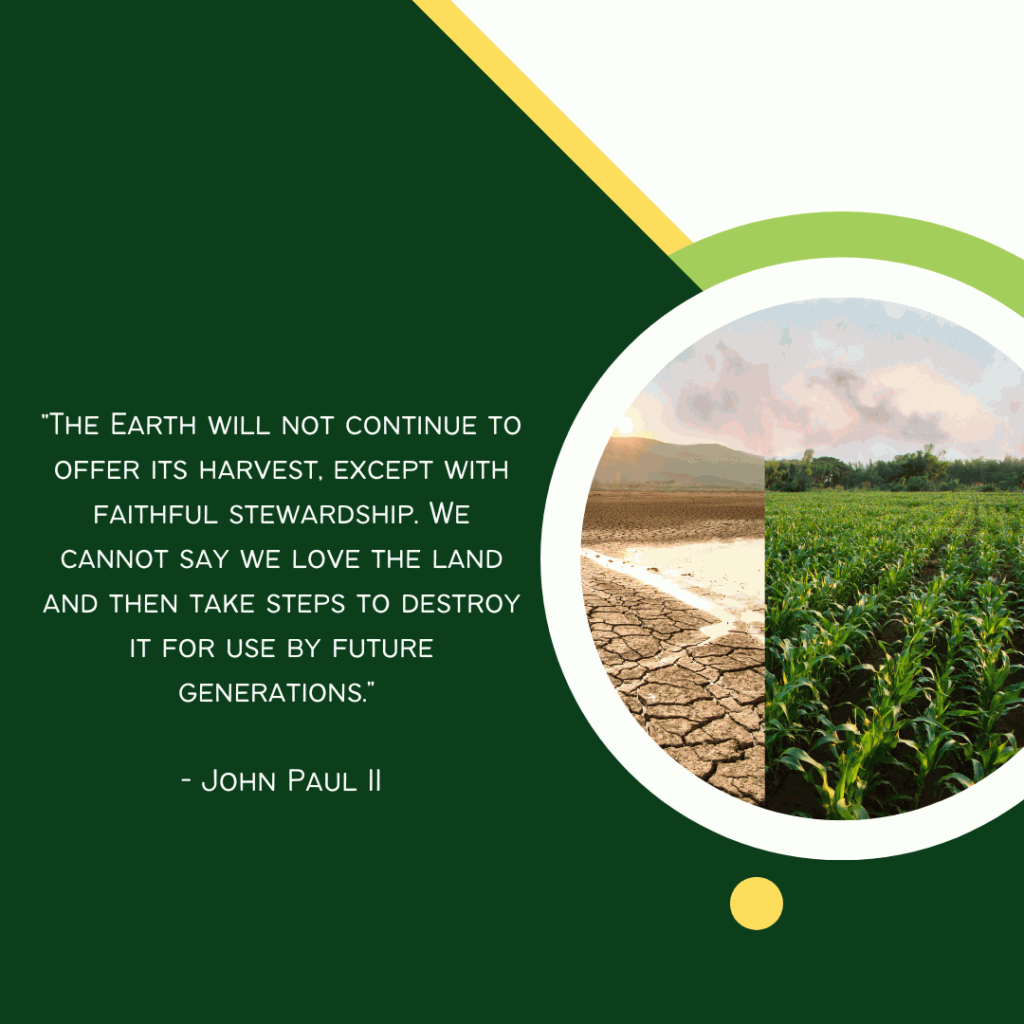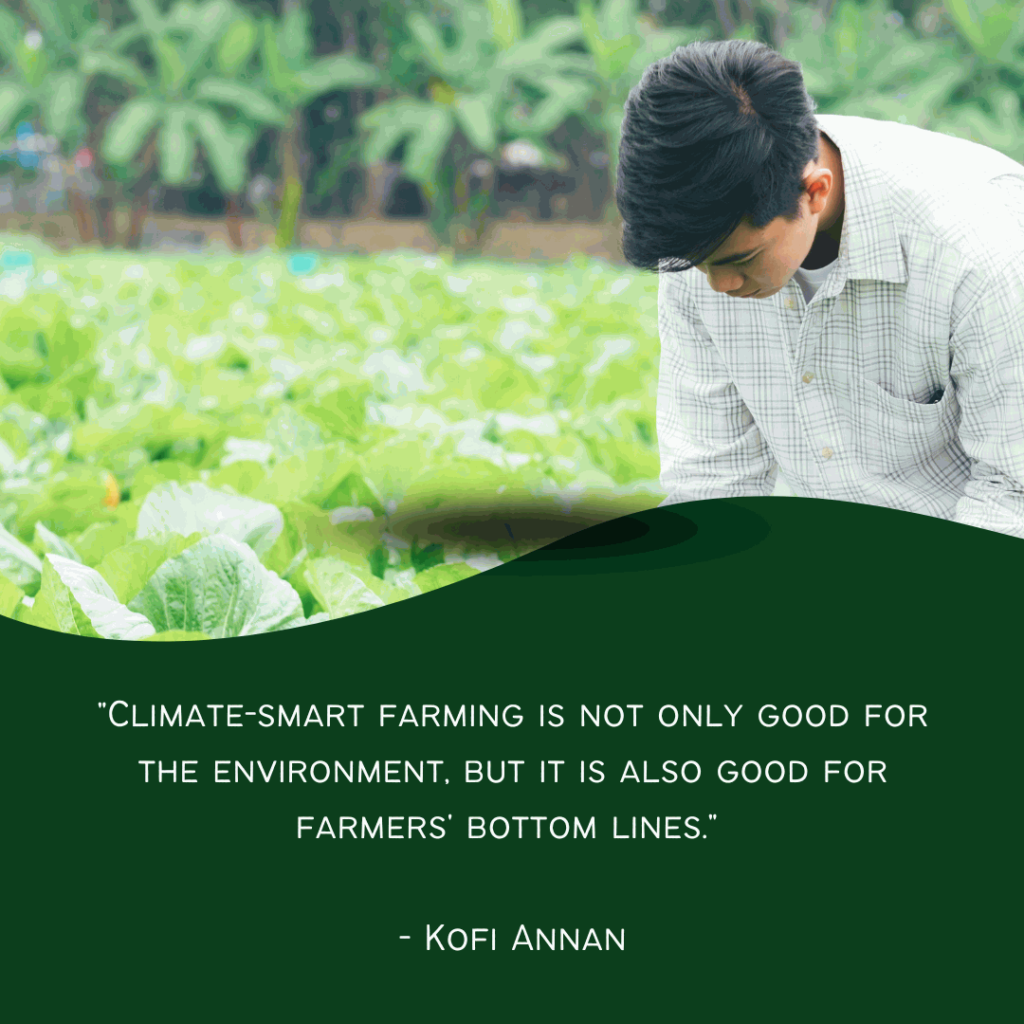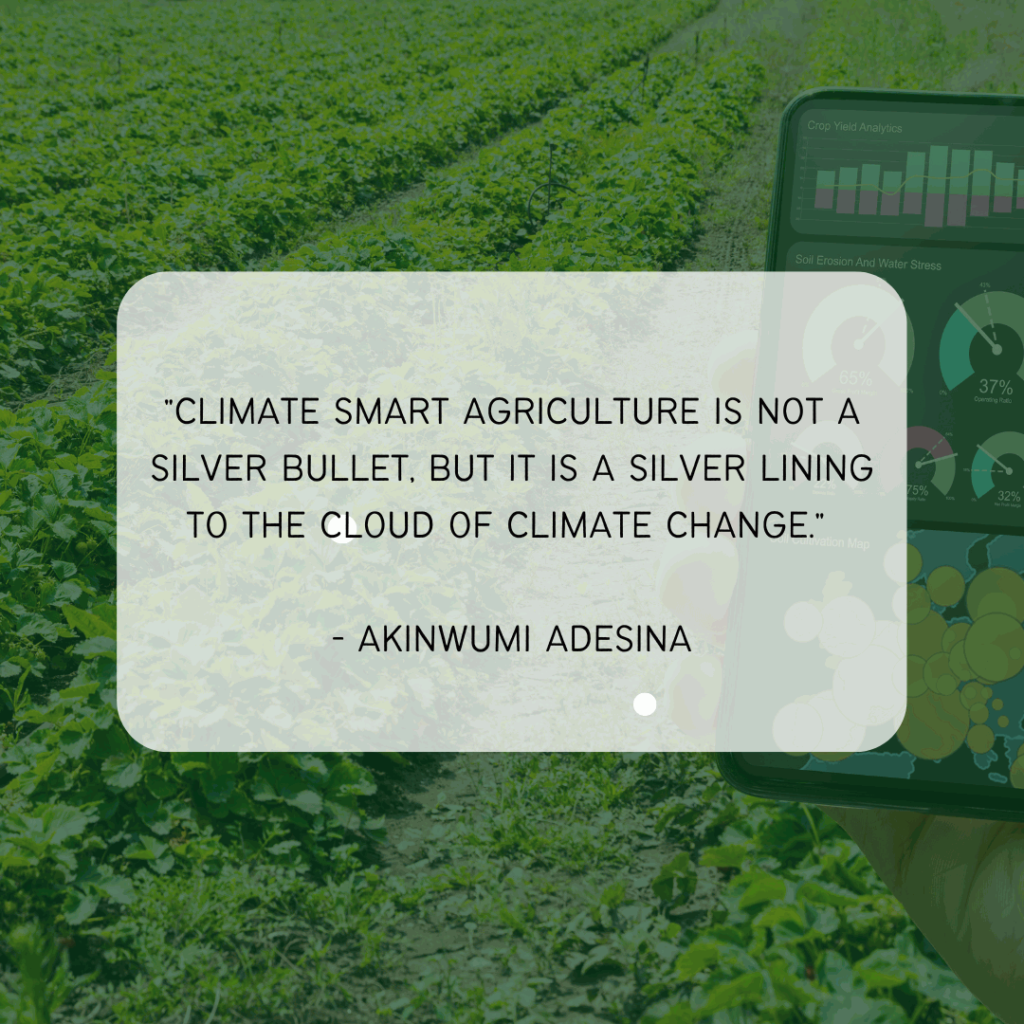Climate change is one of the biggest challenges of our time, and agriculture is one of the sectors most affected by its impacts. Climate smart farming is a holistic approach that aims to address the challenges of climate change while promoting sustainable and profitable agriculture. It involves using innovative technologies and practices to reduce greenhouse gas emissions, adapt to changing weather patterns, and increase productivity and resilience. In this article, I will explore the concept of climate smart farming, its benefits, and specifically discuss four climate-smart farming techniques every farmer should consider.

Climate-smart farming techniques refer to agricultural practices that are designed to minimize the impact of agriculture on the environment while improving the productivity and resilience of agricultural systems. These practices take into account the effects of climate change and help farmers adapt to the changing climate. Here are some reasons why climate-smart farming techniques are important:
Reducing greenhouse gas emissions:
Agriculture is a major contributor to greenhouse gas emissions, which are responsible for climate change. Climate-smart farming techniques, such as conservation tillage, crop rotation, and agroforestry, can help reduce emissions by promoting carbon sequestration in soil and vegetation.
Enhancing resilience:
Climate change is expected to result in more frequent and severe weather events, such as droughts, floods, and storms. Climate-smart farming techniques can help farmers prepare for and recover from these events by improving soil health, conserving water, and diversifying crops.
Improving productivity:
Climate-smart farming techniques can help farmers improve the productivity of their land by increasing soil fertility, reducing erosion, and conserving water. This can help farmers produce more food with fewer inputs, which can increase their incomes and improve food security.
Promoting sustainable use of natural resources:
Climate-smart farming techniques promote the sustainable use of natural resources, such as soil, water, and biodiversity. This can help farmers maintain the long-term productivity of their land and reduce the environmental impact of agriculture.
Supporting rural development:
Climate-smart farming techniques can support rural development by creating jobs, increasing incomes, and improving food security. This can help reduce poverty and improve the overall well-being of rural communities.
Climate-smart farming techniques are essential for the long-term sustainability of agriculture and the well-being of rural communities. By promoting sustainable use of natural resources, enhancing resilience, reducing greenhouse gas emissions, and improving productivity, these practices can help farmers adapt to the changing climate and build a more resilient and sustainable future. So, let’s take a dive into four of these techniques.
Conservation agriculture (CA)
Conservation agriculture (CA) is a set of farming techniques that promote the preservation of soil health, water resources, and biodiversity. CA is considered a climate-smart farming technique because it helps mitigate the impacts of climate change on agriculture and food production. The practice involves three main principles: minimizing soil disturbance, maintaining permanent soil cover, and rotating crops.
Minimizing soil disturbance involves reducing the amount of tillage and mechanical disturbance to the soil. This helps to maintain soil structure and reduce erosion. Reduced tillage also promotes the accumulation of soil organic matter, which is essential for soil fertility and moisture retention.
Maintaining permanent soil cover involves keeping the soil covered with crops or vegetation throughout the year. This helps to prevent soil erosion and loss of nutrients, and it also contributes to the sequestration of carbon in the soil. Cover crops also provide habitat for beneficial insects, which can help control pests and pollinate crops.
Rotating crops involves alternating different crops on the same land to avoid depleting soil nutrients and control pests and diseases. Crop rotation also promotes biodiversity and helps to maintain soil fertility.
Conservation agriculture has several benefits for climate-smart farming. By reducing soil erosion and preserving soil health, CA helps to maintain crop productivity in the face of extreme weather events, such as droughts and floods, which are expected to become more frequent and severe due to climate change. CA also helps to reduce greenhouse gas emissions from agriculture by promoting the sequestration of carbon in the soil and reducing the use of fossil fuels for tillage.
In addition to its climate-smart benefits, conservation agriculture can also improve farm profitability by reducing input costs and increasing yields. By reducing tillage and using cover crops, farmers can reduce the need for fertilizers, herbicides, and pesticides, which can be costly. Furthermore, by improving soil health and reducing erosion, CA can improve crop yields and reduce the need for costly soil amendments.
By minimizing soil disturbance, maintaining permanent soil cover, and rotating crops, CA can help mitigate the impacts of climate change on agriculture while also improving farm profitability.

“Climate-smart farming is not only good for the environment, but it is also good for farmers’ bottom lines.” Kofi Annan
Agroforestry
Agroforestry is a farming system that combines the practices of agriculture and forestry in a way that creates a sustainable and resilient ecosystem. This approach involves the cultivation of trees and crops on the same land, allowing for the mutual benefits of each to be harnessed. Agroforestry is a climate-smart farming technique that can help mitigate the effects of climate change and ensure food security.
Agroforestry offers several benefits to farmers and the environment. Firstly, it promotes soil conservation and improvement. The roots of trees help to stabilize soil, prevent erosion, and increase the organic matter content of the soil. This, in turn, improves soil fertility and water retention, making it possible for crops to grow better and withstand extreme weather conditions.
Secondly, agroforestry enhances biodiversity. By incorporating trees into the agricultural landscape, farmers can provide habitats for various wildlife species, including birds, insects, and mammals. The diverse vegetation cover also supports pollinators, which are essential for the reproduction of crops.
Thirdly, agroforestry contributes to carbon sequestration. Trees are known to absorb carbon dioxide from the atmosphere and store it in their biomass and the soil. By planting trees on farmland, farmers can offset their carbon emissions and contribute to the fight against climate change.
Agroforestry practices include alley cropping, silvopasture, and forest farming. Alley cropping involves planting rows of trees in between rows of crops, while silvopasture involves integrating trees into grazing lands. Forest farming involves cultivating crops under the canopy of a forest. By adopting agroforestry practices, farmers can improve their resilience to climate change while ensuring food security for the future.
Crop diversification
Crop diversification is a climate-smart farming technique that involves growing different types of crops on the same land, either at the same time or in a sequence over time. This approach helps farmers to adapt to changing weather patterns, increase their resilience to pests and diseases, and improve their soil quality, while also reducing their dependence on a single crop.
Crop diversification offers several benefits to farmers and the environment. Firstly, it helps to reduce the risks associated with climate change. By growing different crops on the same land, farmers can mitigate the impact of extreme weather events, such as droughts or floods, which can have devastating effects on a single crop. Moreover, crop diversity can help to increase the resilience of the farm system, as it provides a buffer against crop failure and supports a more stable income stream.
Secondly, crop diversification can contribute to soil conservation and improvement. Different crops have different root structures, which can help to prevent soil erosion, reduce soil compaction and enhance soil fertility. Moreover, crop rotation can help to break pest and disease cycles, reduce the need for pesticides and fertilizers, and improve the health of the soil.
Thirdly, crop diversification can contribute to improved biodiversity on farms. Growing a range of crops can provide habitats for different types of pollinators, which can help to increase the yield and quality of crops. Moreover, diverse crops can also provide food and shelter for different wildlife species, which can contribute to the overall health and resilience of the farm ecosystem.
Crop diversification practices include intercropping, crop rotation, and mixed farming. Intercropping involves planting different crops on the same land at the same time, while crop rotation involves planting different crops in sequence over time. Mixed farming involves integrating crops with livestock, such as grazing animals or chickens.

Water management
Water management is a climate-smart farming technique that involves the efficient use and conservation of water resources. This approach aims to help farmers adapt to changing weather patterns, mitigate the impact of droughts and floods, and improve the productivity and sustainability of their farm systems.
Water management offers several benefits to farmers and the environment. Firstly, it helps to conserve and protect water resources. By using water more efficiently and reducing wastage, farmers can ensure that there is enough water available for their crops, livestock, and other farm activities. Moreover, water management can help to prevent soil erosion, reduce nutrient runoff, and enhance the quality of water in nearby rivers and lakes.
Secondly, water management can help to increase the resilience of farm systems. By managing water resources effectively, farmers can mitigate the impact of droughts and floods, which are expected to become more frequent and severe with climate change. Moreover, water management can help to improve the health and productivity of crops and livestock, which can contribute to the overall sustainability of the farm system.
Thirdly, water management can help to reduce greenhouse gas emissions. By reducing the need for irrigation, pumping, and other energy-intensive activities, farmers can lower their carbon footprint and contribute to the fight against climate change.
In conclusion, climate-smart farming techniques are crucial for farmers to adopt in order to mitigate the impacts of climate change, improve their agricultural productivity, and ensure food security for future generations. By implementing sustainable practices such as conservation agriculture, agroforestry, and water-efficient irrigation systems, farmers can reduce their greenhouse gas emissions, enhance soil health, and promote biodiversity. Additionally, by utilizing climate data and weather forecasts, farmers can make informed decisions on planting and harvesting, reducing the risk of crop failure due to extreme weather events. It is imperative for farmers to prioritize climate-smart techniques as we work towards a sustainable future for agriculture and the planet as a whole.
